Ave, dulcissima Maria
-
Ships in 2 to 3 weeks
Details
Description
SKU: AN.AMP-0119
Composed by Don Carlo Gesualdo. Edited by Kenneth Fulton. Octavo. Alliance Music Publications #AMP 0119. Published by Alliance Music Publications (AN.AMP-0119).Gesualdo/Fulton.
Don Carlo Gesualdo, the controversial Prince of Venosa, is known primarily for his Italian madrigals. However, he also wrote three books of sacred motets, perhaps in penance for the violent acts towards his adulterous wife and her lover. The first book, for six and seven voices has come to us incomplete, but the remaining two books are complete. This motet, Ave Maria dulcissima, comes from the second book published in 1603.
While the sacred music of Gesualdo is permeated with the accepted choral traditions of the Renaissance, it expands those traditions and fuses them with the intensely emotional Italian madrigal resulting in a sacred musical idiom that sets his sacred music apart from the ars perfecta of the late Renaissance masters. While the ars perfecta emphasized the craftsmanship of skillful musical architecture through imitative polyphony as its ideal, Gesualdo preferred a musical structure which allowed a more graphic representation of the text. Thus, while his settings often utilize the imitative polyphony common to the period, they are filled with unexpected and startling intervals of imitation as well as unexpected accidentals which produce an overall chromatic language in the vertical structures.Homophony in his sacred motets retains many of the surprising progressions found in his madrigals. Hence, while the aesthetic and philosophical aims of the motets are relatives by the basic choral traditions of the period, they conflict in their manner of presentation.
This edition has been prepared using the principles of modem notation in a manner that will, it is hoped, aid in achieving the most accurate performance style. Rhythmic independence in each of the voice lines is the primary goal. To achieve that objective, two levels of phrasing must be accomplished. As the most basic level, points of stress in the text have been the fundamental consideration in the placement of bar lines and in the determination of the mixed meter. In performance, the editor feels that the individual mixed meters of each part focuses the tendency of the modem singer to stress after the bar line in favor of the desired presentation. Above the textual syntax, musical phrase climaxes (determined by the tensions and releases of the music in harmony and rhythm) have been clearly indicated by the markings given below. Whenever there is conflict between these elements of phrasing, the editor has to chosen to emphasize text. Stresses are marked withthe following symbols:
The final musical product should reveal a transparent texture of five melodic lines flowing to a common quarter note pulse. Pulse groupings within the individual melodic lines should be totally independent according to the individual textual syntax (the basis for the bar lines inserted by the editor). All stresses should be tenuto rather than marcato. All expressive marks are the marks of the editor. The original pitch levels have been retained. The editor also suggests the addition of a few tenors to reinforce the lowest alto parts, especially in contrapuntal sections of the music.
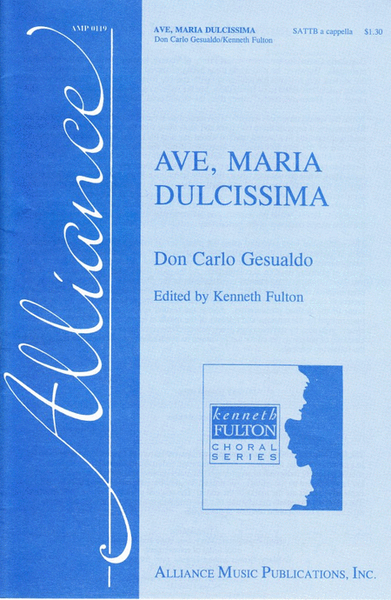
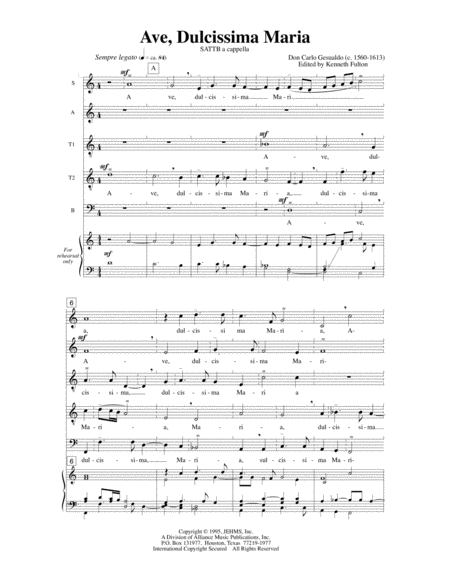
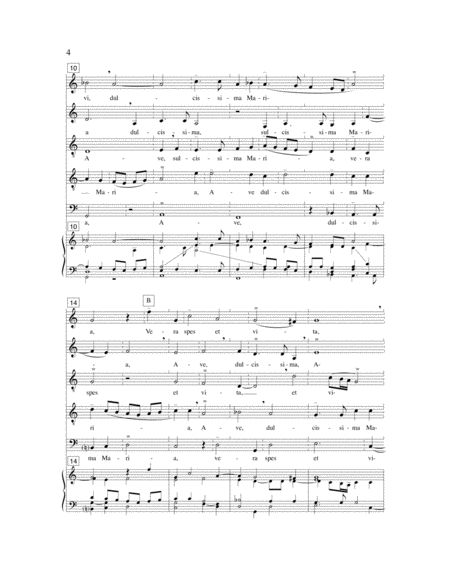
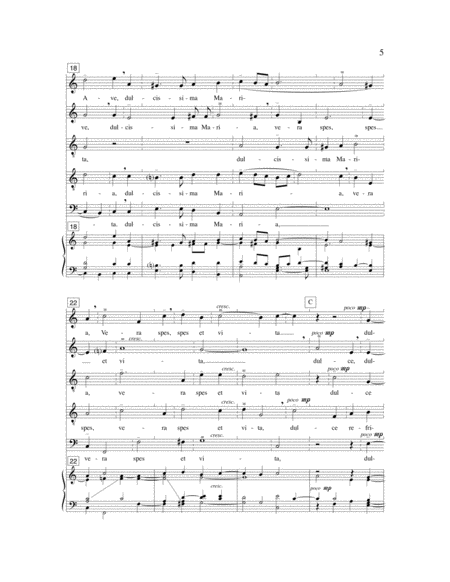
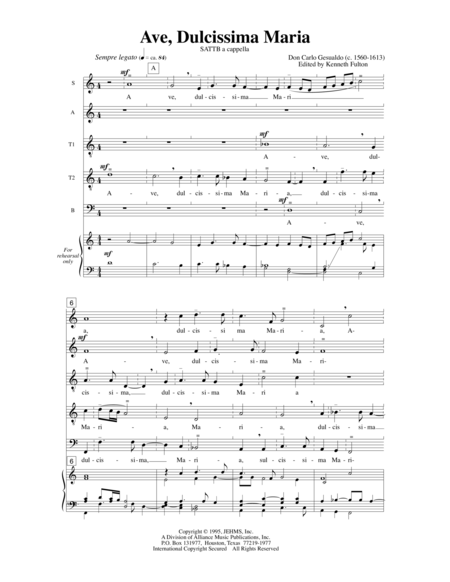
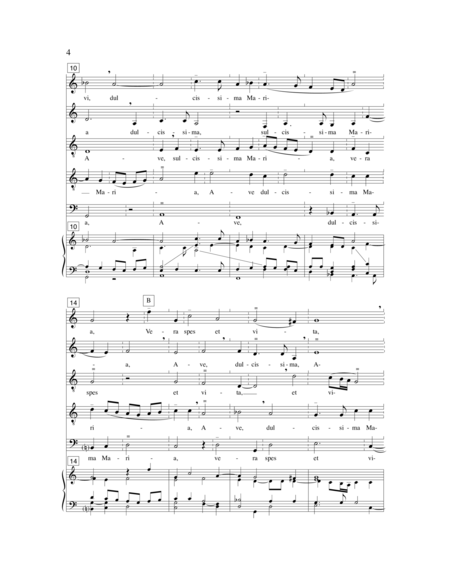
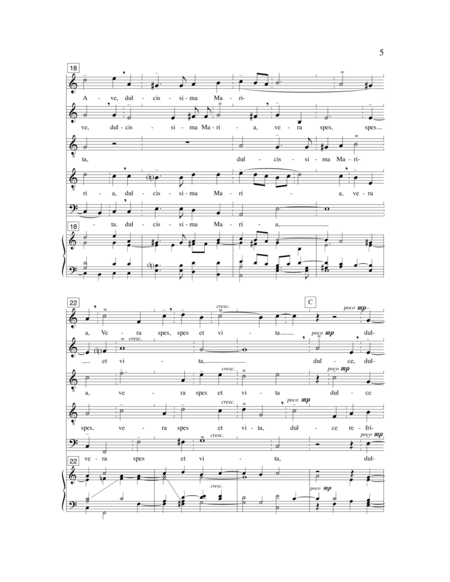
 Share
Share